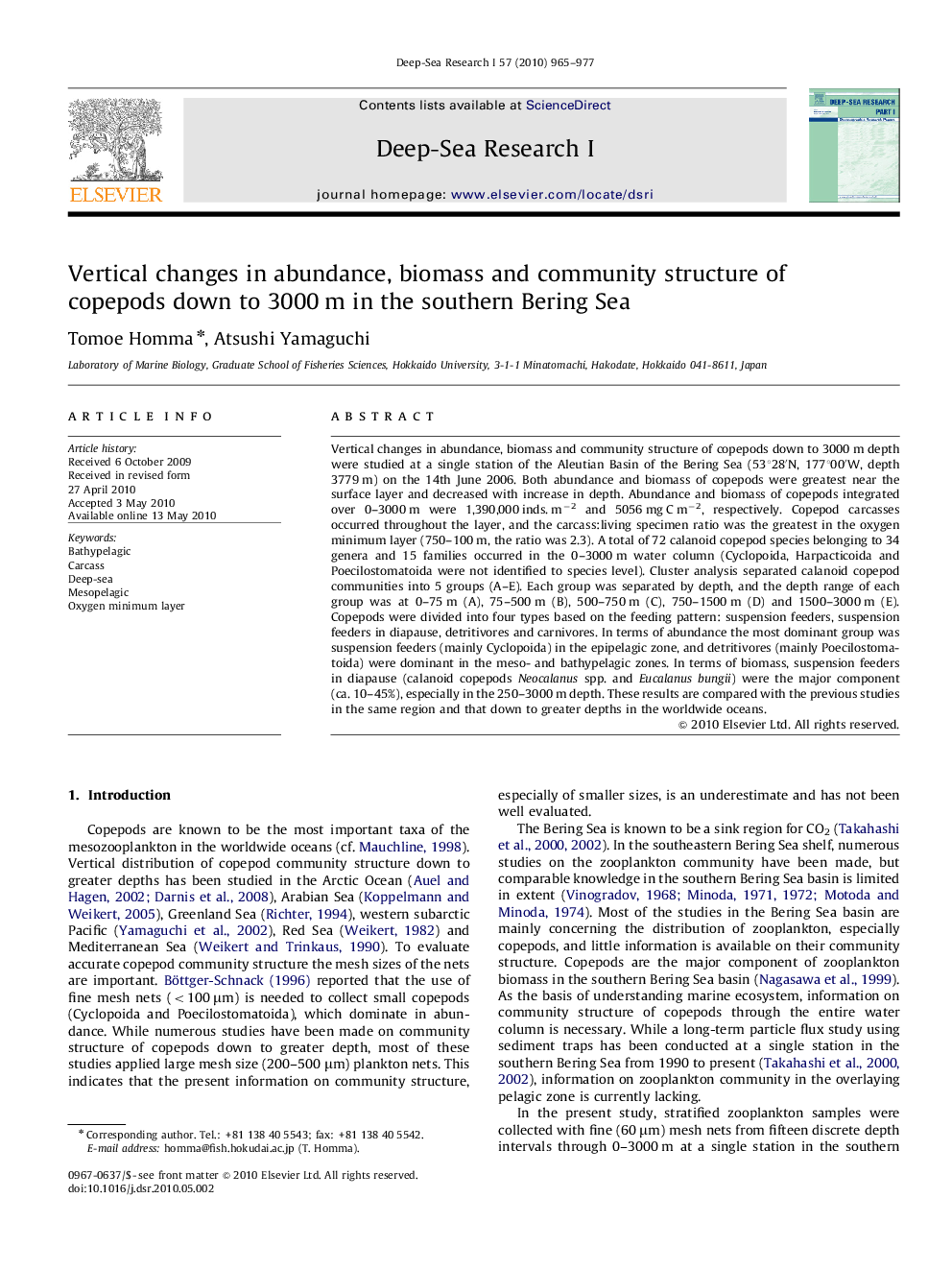| کد مقاله | کد نشریه | سال انتشار | مقاله انگلیسی | نسخه تمام متن |
|---|---|---|---|---|
| 4535079 | 1326082 | 2010 | 13 صفحه PDF | دانلود رایگان |

Vertical changes in abundance, biomass and community structure of copepods down to 3000 m depth were studied at a single station of the Aleutian Basin of the Bering Sea (53°28′N, 177°00′W, depth 3779 m) on the 14th June 2006. Both abundance and biomass of copepods were greatest near the surface layer and decreased with increase in depth. Abundance and biomass of copepods integrated over 0–3000 m were 1,390,000 inds. m−2 and 5056 mg C m−2, respectively. Copepod carcasses occurred throughout the layer, and the carcass:living specimen ratio was the greatest in the oxygen minimum layer (750–100 m, the ratio was 2.3). A total of 72 calanoid copepod species belonging to 34 genera and 15 families occurred in the 0–3000 m water column (Cyclopoida, Harpacticoida and Poecilostomatoida were not identified to species level). Cluster analysis separated calanoid copepod communities into 5 groups (A–E). Each group was separated by depth, and the depth range of each group was at 0–75 m (A), 75–500 m (B), 500–750 m (C), 750–1500 m (D) and 1500–3000 m (E). Copepods were divided into four types based on the feeding pattern: suspension feeders, suspension feeders in diapause, detritivores and carnivores. In terms of abundance the most dominant group was suspension feeders (mainly Cyclopoida) in the epipelagic zone, and detritivores (mainly Poecilostomatoida) were dominant in the meso- and bathypelagic zones. In terms of biomass, suspension feeders in diapause (calanoid copepods Neocalanus spp. and Eucalanus bungii) were the major component (ca. 10–45%), especially in the 250–3000 m depth. These results are compared with the previous studies in the same region and that down to greater depths in the worldwide oceans.
Journal: Deep Sea Research Part I: Oceanographic Research Papers - Volume 57, Issue 8, August 2010, Pages 965–977